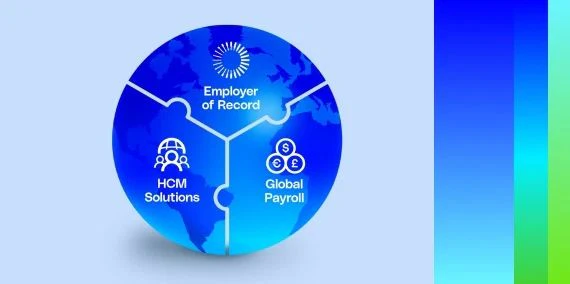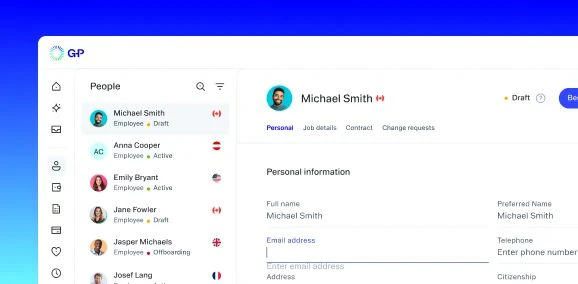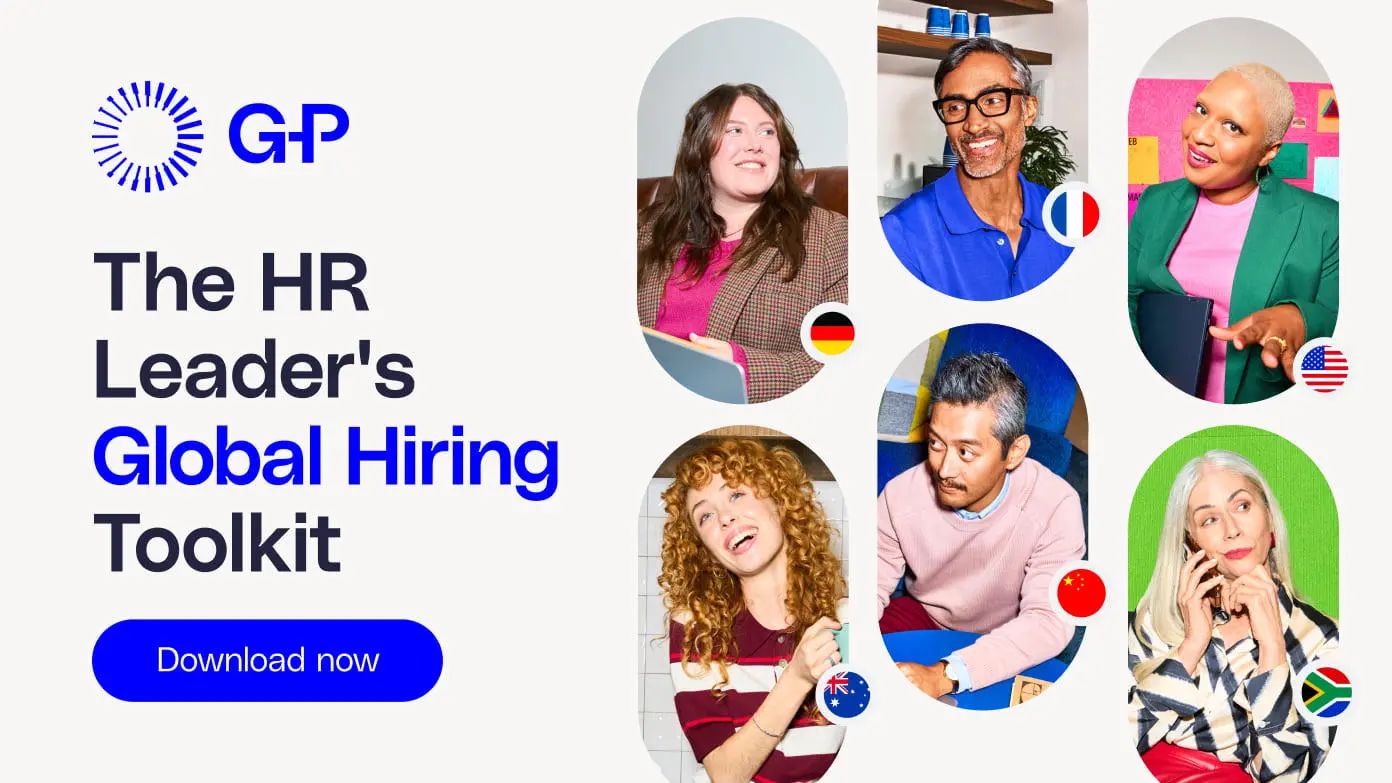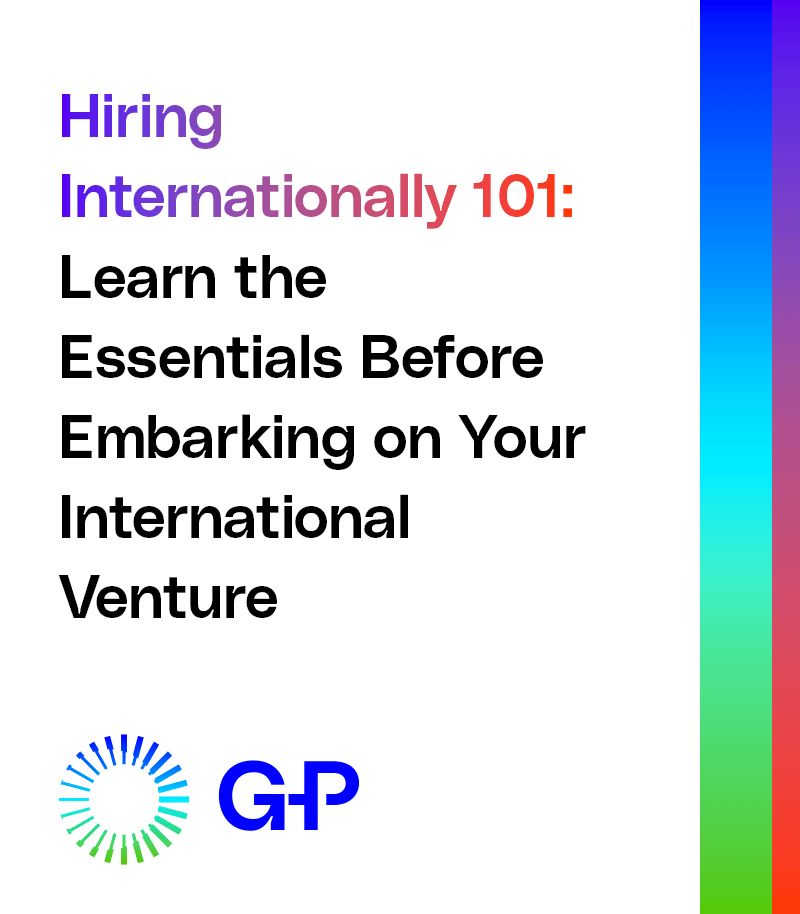When learning how to hire globally, you'll discover three main approaches – using an employer of record (EOR), creating a legal entity, or working with independent contractors. Each method for hiring global teams serves different business needs and affects your timeline, budget, legal protections, and control over the hiring process. The good news is that your approach can evolve as your international footprint grows.
3 ways to hire global teams
1. Use an employer of record (EOR)
An EOR allows you to hire employees globally without setting up an entity. EORs handle the legal complexities, manage payroll for your global teams, and complete all compliance paperwork. Your company maintains control over day-to-day work management while the EOR handles employment logistics and ensures compliance.
Best for: Quick hiring decisions, testing new markets, small teams across multiple countries
2. Create a legal entity
Creating a legal entity means establishing your own company branch or subsidiary in-country to hire global employees directly. This approach gives you complete control, but requires more time and investment. You'll need to navigate and comply with all local employment laws and regulations when hiring from abroad.
Best for: Long-term expansion plans, large teams in strategic markets, permanent market presence
See the differences between an EOR and a legal entity.
3. Work with independent contractors
Independent contractors provide specialized services for your company without the commitment of full-time employment. This option on the hiring decision tree offers you the fastest path to specialized talent for project-based work, but there are misclassification risks if contractors are managed like traditional employees.
Best for: Project-based work, specialized skills, non-core business functions
Hiring decision tree: comparing your options
|
What to compare |
EOR |
Legal entity |
Contractors |
|---|---|---|---|
|
Speed to hire |
Days to weeks |
Months to years |
Immediate |
|
Starting cost for hiring offshore workers |
Low |
High |
Very low |
|
Ongoing work for internal teams |
Low |
High |
Low |
|
Legal risk when hiring from abroad |
Low |
Low (if done right) |
High (worker misclassification) |
|
Scalability for global teams |
Very easy |
Somewhat easy |
Very easy |
|
Intellectual property protection |
Strong |
Strong |
Requires careful contracts |
|
Worker experience |
Excellent (with right partner) |
Excellent (with thoughtful approach) |
Mixed |
Choosing the right global hiring option
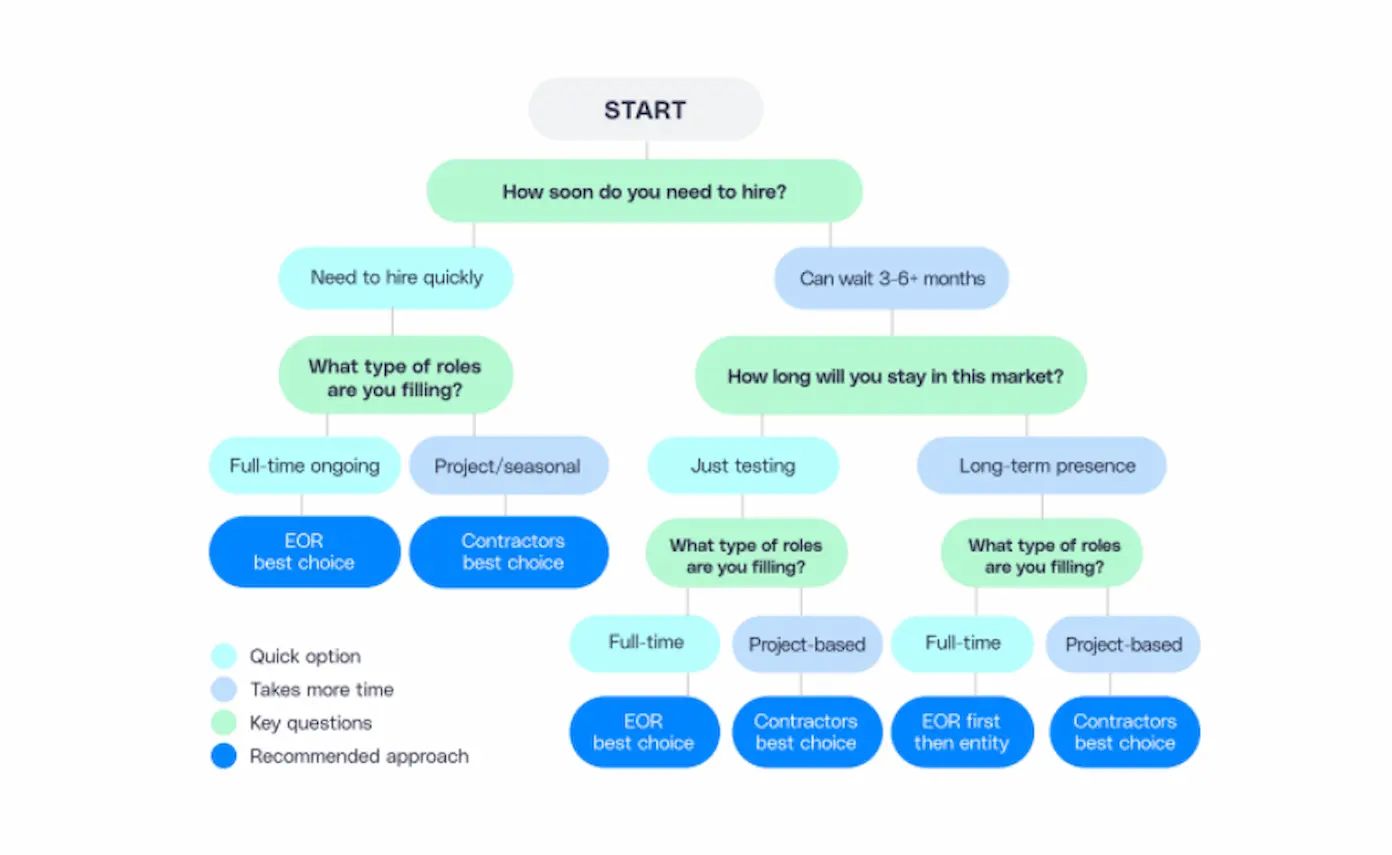
Key takeaways for your global hiring strategy
Learning how to hire globally involves choosing the best approach for your business: EORs for quick market entry, legal entities for long-term commitment, and contractors for specialized projects.
Your hiring decision tree should balance urgency, budget, and strategic goals when deciding how to hire employees globally. Whether you're looking to hire one employee or build a global team, G-P simplifies the complexities of hiring from abroad with expert guidance and comprehensive solutions that ensure compliance while optimizing your international expansion strategy.









